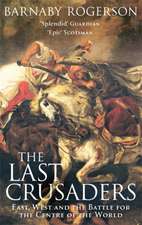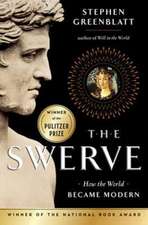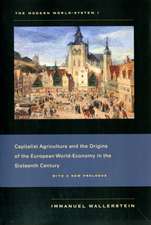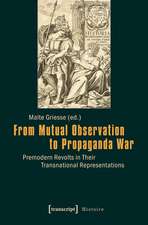Metals and Monies in an Emerging Global Economy: An Expanding World: The European Impact on World History, 1450 to 1800
Autor Arturo Giráldez Editat de Dennis O. Flynnen Limba Engleză Hardback – 29 mai 1997
Preț: 716.39 lei
Preț vechi: 994.33 lei
-28% Nou
Puncte Express: 1075
Preț estimativ în valută:
137.08€ • 143.51$ • 113.43£
137.08€ • 143.51$ • 113.43£
Carte tipărită la comandă
Livrare economică 05-19 aprilie
Preluare comenzi: 021 569.72.76
Specificații
ISBN-13: 9780860785316
ISBN-10: 0860785319
Pagini: 404
Dimensiuni: 174 x 246 x 32 mm
Greutate: 0.89 kg
Ediția:1
Editura: Taylor & Francis
Colecția Routledge
Seria An Expanding World: The European Impact on World History, 1450 to 1800
Locul publicării:Oxford, United Kingdom
ISBN-10: 0860785319
Pagini: 404
Dimensiuni: 174 x 246 x 32 mm
Greutate: 0.89 kg
Ediția:1
Editura: Taylor & Francis
Colecția Routledge
Seria An Expanding World: The European Impact on World History, 1450 to 1800
Locul publicării:Oxford, United Kingdom
Cuprins
Contents: Introduction: monetary substances in global perspective; Source areas: Silver production in central Europe, 1450-1618, John U. Nef; Una forma de oposición: el contrabando, ZacarÃas Moutoukias; The production and uses of gold and silver in 16th- and 17th-century Japan, A. Kobata; Exports of Japan’s silver to China via Korea and changes in the Tokugawa monetary system during the 17th and 18th centuries, Tashiro Kazui; The Dutch East India Company's trade in Japanese copper, 1645-1736, Kristof Glamann; A note on the relative importance of slaves and gold in west African exports, Richard Bean; End markets: International bullion flows and the Chinese economy circa 1530-1650, William S. Atwell; Silver and the fall of the Ming: a reassessment, Brian Moloughney and Xia Weizhong; The Cowrie currencies of West Africa, Marion Johnson; A history of money in Asian perspective, Frank Perlin; Born with a ’silver spoon’: the origin of world trade in 1571, Dennis O. Flynn and Arturo Giráldez; Intermediary trade routes: Trade between China, the Philippines and the Americas during the 16th and 17th centuries, Chuan Hang-Sheng; Amsterdam, marché mondial des métaux précieux au XVIIe et XVIIIe siècles, J.-G. Van Dillen; World silver flows and monetary factors as a force of international economic integration, 1658-1758, K. N. Chaudhuri; The disintegration of the Ottoman monetary system during the 17th century, Sevket Pamuk; Imports of treasure and Surat’s trade in the 17th century, V. B. Gupta; Index.
Notă biografică
Dennis O. Flynn, Pacific World History Institute, USA, Arturo Giraldez, University of the Pacific, USA.
Recenzii
'European and Non-European Societies and Christianity and Missions along with the other volumes in An Expanding World should become a standard collection for any academic library. The invaluable bibliography, the variety of themes, and the historical problems will engage students of all levels, undergraduate, graduate, and postdoctoral, in many aspects of early modern and world history for years to come.' Sixteenth Century Journal, Vol. XXX, No. 1
Descriere
The literature on early-modern monetary history is vast and rich, yet overly Eurocentric. This book takes a global approach. It calls attention to the fact that, for example, Japan and South America were dominant in silver production, while China was the principal end-market; key areas for transshipment included Europe and Africa, India and the Middle East. Europeans were often just middlemen. Other monetized substances - gold, copper and cowries - must also be viewed globally. The interrelated trades in metals and monies are what first linked worldwide markets, and disequilibrium within the silver market in the 16th and 17th centuries was an active cause of this global trade.


























